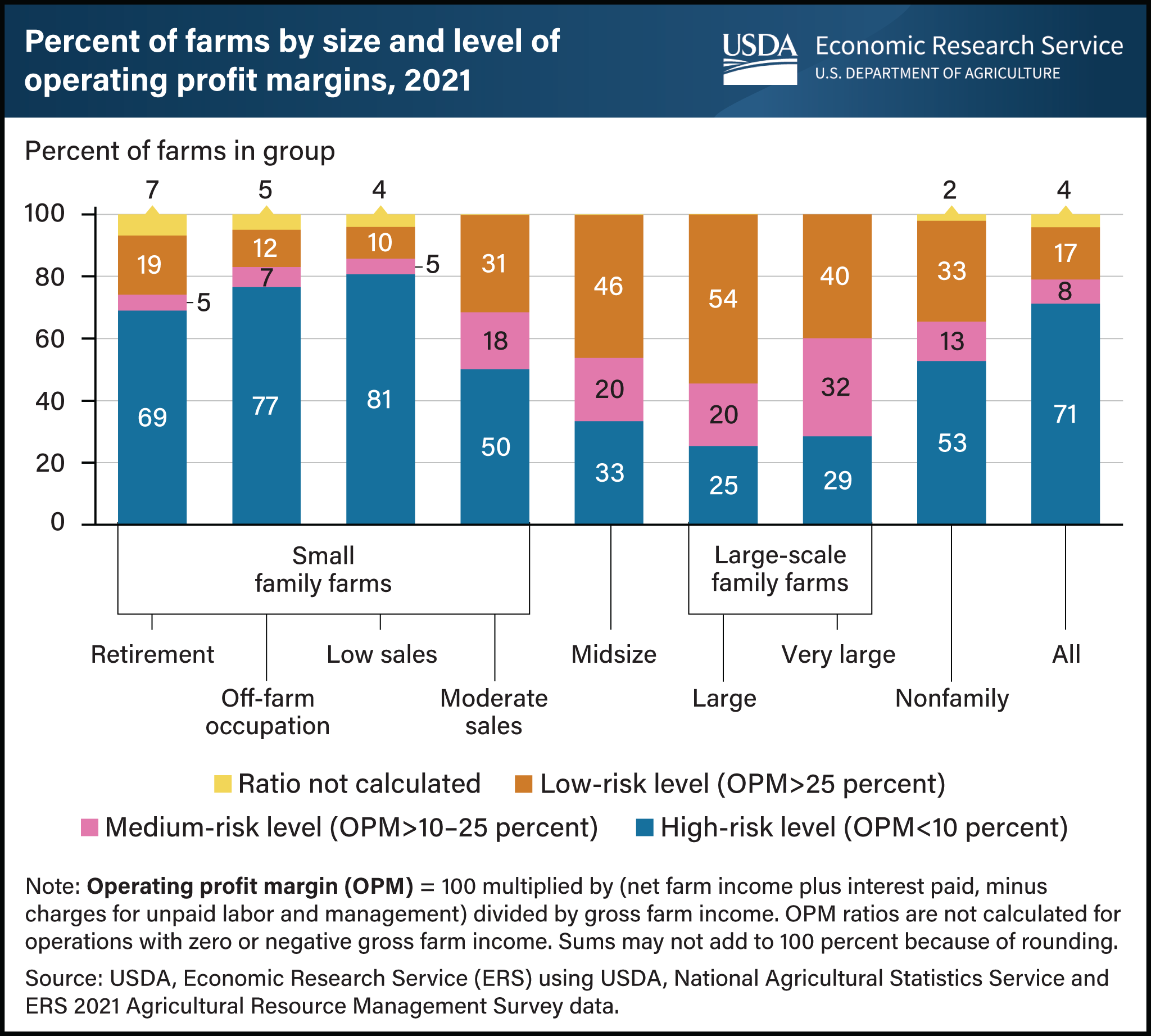Large family farms faced less risk in 2021 based on the operating profit margin ratio
- by Noah Miller
- 7/13/2023

Large family farms were more likely to have stronger financial performance than other farms, according to USDA, Economic Research Service (ERS) researchers reporting data from the 2021 Agricultural Resource Management Survey (ARMS). ERS researchers measured financial performance using operating profit margin (OPM), the ratio of operating profit to gross farm income. They categorized farms as low risk if they had an OPM larger than 25 percent. Large-scale family farms, defined as those with gross cash farm income (GCFI) of $1 million or more, were the most likely to have low-risk operating profit margins compared with nonfamily and family farms of other sizes. The share of large-scale family farms considered low risk was 54 percent in 2021, an increase from 48 percent in 2020. The large-scale category includes very large farms, with GCFI of $5 million or more. Large-scale family farms make up 3 percent of U.S. farms but contributed 46 percent of the value of production in 2021. Small family farms, those with GCFI less than $350,000, were less likely to have an operating profit margin over 25 percent. Small family farms represent 89 percent of U.S. farms and contributed 18 percent of the value of production. This chart appears in the ERS report America’s Farms and Ranches at a Glance, published in December 2022, and Examining Financial Risk Measures on Family and Nonfamily Farms, published in Amber Waves in June 2023.

